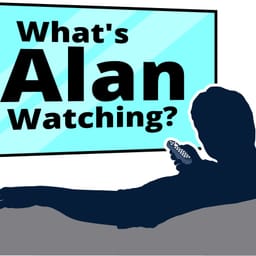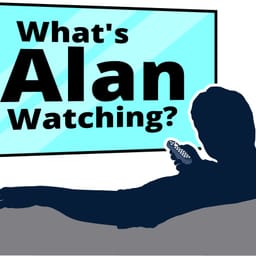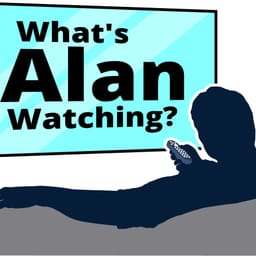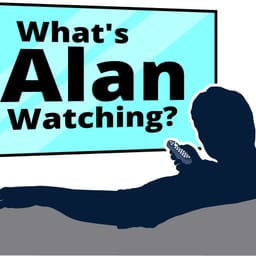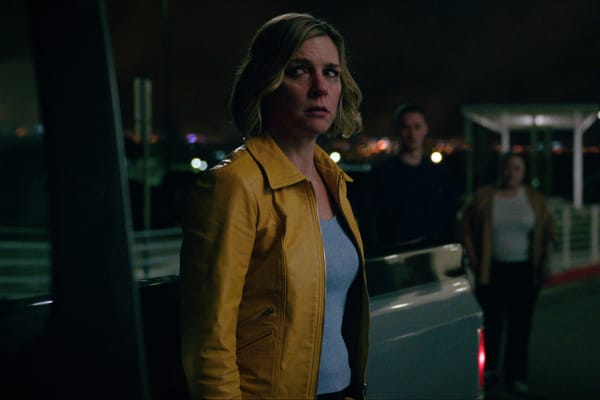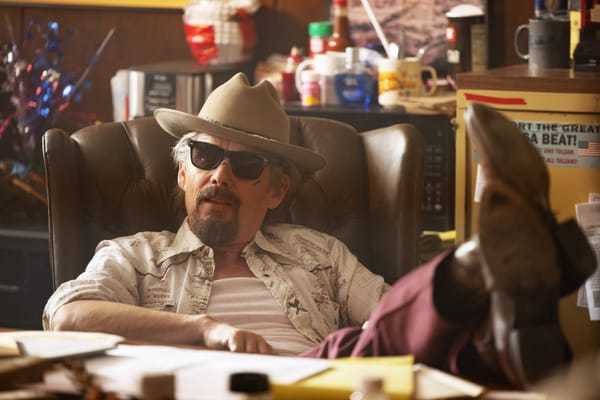Submitted for my editor's approval
Wrapping up the first draft of the Rod Serling biography, plus 'Pluribus,' Diane Ladd, a classic 'Frasier' moment, and more.
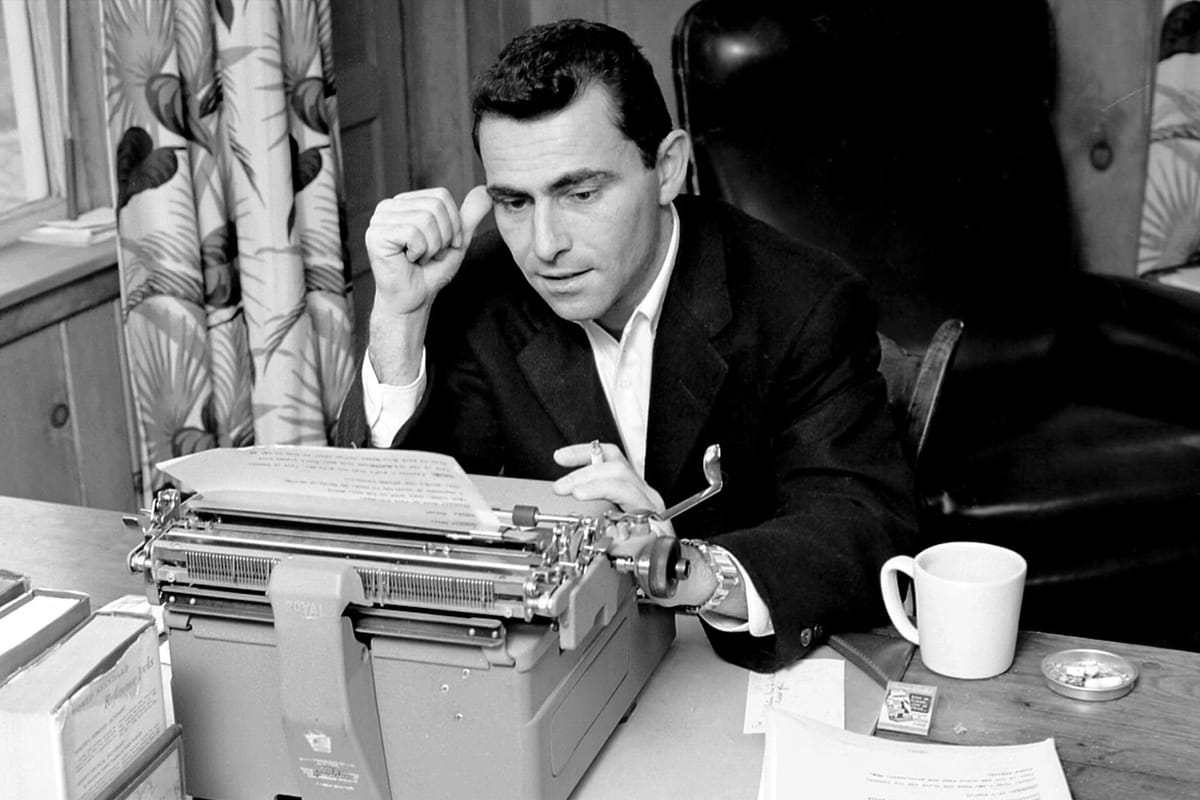
Today's What's Alan Watching? newsletter coming up just as soon as I put a book slide in the window...
Happy Friday! The big stuff happening around here this week involves Vince Gilligan's new Apple sci-fi series Pluribus. I published my review last night, for paid subscribers, which turned into a discussion of the merits of fro-yo versus real ice cream:

And I published my recap of the first two episodes this morning, also for paid subscribers:

If you're a free subscriber who wants to discuss what you've seen so far, the comments here are open. There will be a lot of Pluribus discussion over the next couple of months, as it's one of my favorites in quite some time. But for now, let's move onto other business, including a milestone for my current book project.
What's next?
Over the next week, articles that paid subscribers can look forward to include:
- My recap of Sunday night's The Chair Company;
- My recap of the third episode of Pluribus;
- My review of the Netflix miniseries The Beast in Me, a thriller starring Claire Danes and Matthew Rhys;
- For What Else Is Alan Watching? bonus tier subscribers, I was inspired by the close proximity of a new Netflix show with Matthew Rhys to a new Netflix season with Keri Russell, and began wondering how actors like Russell and Danes would have done swapping famous past roles.
Catching up
Besides the aforementioned Pluribus stories, here's what I've published since last Friday's newsletter:
- I recapped the fourth episode of The Chair Company, which revealed the dark(ish) secret in Ron's past:

- I recapped The Lowdown season finale, where Lee found out that all was not as it seemed:

- vI reviewed the fun Netflix miniseries Death By Lightning, starring Michael Shannon as President James Garfield and Matthew Macfadyen as Garfield's assassin Charles Guiteau:
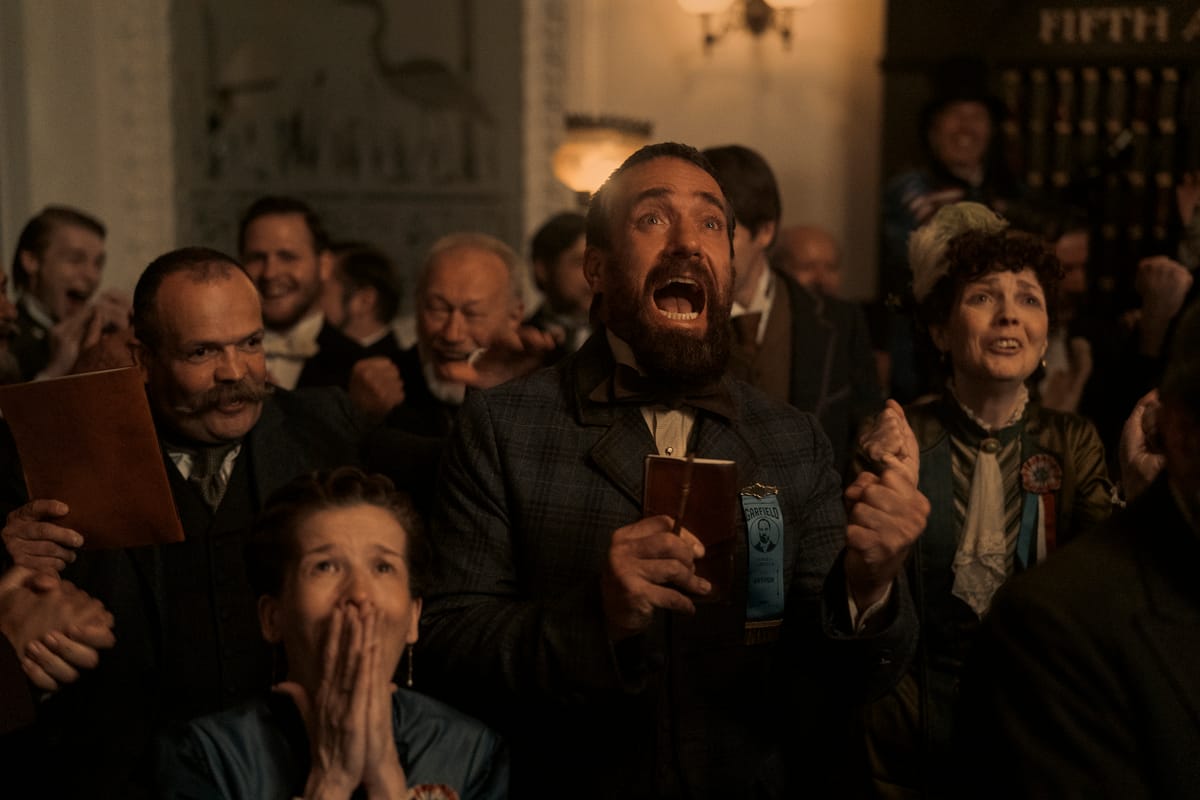
- As a freelance assignment for Emmy Magazine, I also interviewed Macfadyen about finding a method to Guiteau's madness:

Housekeeping!
I'm currently in the midst of overseeing a redesign of the whole site to make it prettier and more user-friendly. Coincidentally, the Ghost team just imported every post from the original Blogger version of What's Alan Watching?, with their original tags still attached. So if you want, for instance, to see all my retro recaps of Freaks and Geeks, they're now available here:

All of this should be easier to find once the redesign is finished.
Still sorting out what to do with the original site (and my former Substack site, whose posts now also live here), since there are Google problems with versions of the same posts existing on multiple sites. I don't want to just erase all the old comments, though, so I'll keep exploring options. Regardless, all that stuff was published long before I was running a paid subscription model, so it will remain free for all to read.
Odds and/or ends

- Diane Ladd died Monday. She was 89. Her remarkable career was mostly on the big screen, but a few of her TV roles deserve mention at the time of her passing. An odd one: she stole scenes in Martin Scorsese's Alice Doesn't Live Here Anymore as brassy waitress Flo. When the movie was adapted into the CBS sitcom Alice, Polly Holiday played Flo, and the character was so popular to merit a spinoff. Alice needed a replacement for Holiday, and hired... Diane Ladd, basically giving the same performance she had in the movie, only now playing a character named Belle. Ladd also teamed up with daughter Laura Dern for Mike White's masterpiece, the HBO comedy Enlightened. The first season's "Consider Helen" is an all-timer, both as an episode of TV and as an example of how a single episode can completely change how you think about a series. I found the early episodes of Enlightened fascinating but also exasperating, with Dern's character so anxiety-provoking that it could be unbearable. But "Consider Helen," told from the POV of Ladd as her mom, made it clear that White knew just how exasperating Dern was. I went from watching episodes through the slits between my fingers to absolutely loving it. Real-life family members don't always have chemistry on screen. Ladd and Dern always did.
- I had a long conversation with Saul Austerlitz from Ministry of Pop Culture about the post-Peak TV era, how covering TV has changed for me — both since I started doing it in the Nineties, and since I left Rolling Stone in September — why I prefer TV shows made by people who like TV, and a lot more.
- I haven't watched Ryan Murphy's new Hulu legal drama All's Fair, starring Kim Kardashian, Naomi Watts, Glenn Close, Sarah Paulson, Teyana Taylor and Niecy Nash-Betts. But I'm not surprised the reviews have been overwhelmingly negative. The only Murphy shows I've loved unreservedly were ones where others were the chief creative force, like Pose and The People v. OJ Simpson. But there was a time when his strengths as a storyteller made it worth sitting through his weaknesses. That feels very far removed from what he's doing lately.
She's such a groovy lady
The Pluto TV channel that rotates Cheers and Frasier repeats has of late become our go-to option when no one can agree on what to watch. Man, both shows hold up, especially episodes from the first five seasons of each.
The other day, we caught Frasier Season Three's "Martin Does It His Way." The death of an elderly relative whom nobody liked, and who never did anything with her life, leaves all three Crane men with a dilemma. Niles can't figure out where to dispose of her ashes. Frasier can't think of anything nice to say in his eulogy. And Martin realizes it's time to finally try to live out his dream of writing a song for Frank Sinatra.
The trio work on the song together, and when Sinatra's people reject it, Frasier realizes he can use it to solve his eulogy problem:
It's the kind of moment Frasier could do so well. It's simultaneously funny and poignant, and it takes advantage of Kelsey Grammer's energy in anything musical or music-adjacent.
I have only one complaint, which I finally feel safe sharing after all these years: the opening bars of the song are just ripping off the Sesame Street theme.
Hank's the Boss?
While on the subject of comedy stars and music, did you know that Hank Azaria is the frontman for a Bruce Springsteen tribute band? Last night I went to see him and the EZ Street Band play at BergenPAC, and wound up in the front row — far closer than I've ever seen Bruce himself. Here's a small snippet from a very high-energy show:
Submitted for my editor's approval
On Monday, I’ll be sending my editor at Grand Central Publishing the first draft of the manuscript for my Rod Serling biography. The book business moves slowly, so we're nearly a year away from its publication. The title, cover, and other details are still being worked out, and I'll be excited to reveal each of those as they're finalized, and to provide preorder information once it's available.
I'm sure I'll also be driving all of you nuts with Serling trivia from now until pub day, because my god do I have a lot of it stored in my head now after all the research I did over the last 14 months. Among those steps:
- I watched every episode of the original Twilight Zone, some as rewatches, some as first-time views.
- I watched every segment Serling wrote for Rod Serling's Night Gallery. (There are some good non-Serling installments, but since he was a figurehead on that show, it didn't seem as necessary as looking at Twilight Zone episodes he oversaw but didn't write himself.)
- I watched as many of his 1950s live teleplays as were available, whether on YouTube or in various museum collections.
- I watched all of the movies where Serling wrote or co-wrote the screenplay, from famous ones like Planet of the Apes and Seven Days in May to rightly-forgotten ones like Assault on a Queen.
- I visited the Serling archives at UCLA and Ithaca College, and had a couple of local researchers go through the larger Serling archive at the Wisconsin Historical Society.
- I read a few dozen books on Serling and/or his work.
- I watched every TV interview of his I could find either online or in different archives. I also read every newspaper or magazine interview I could find from the 20 year stretch between 1955 (when he became famous) and 1975 (when he died). The guy gave lots of interviews.
- Though most of Serling's coworkers are no longer with us, I spoke with a handful of them. I also pored over various interviews that others gave while they were alive.
- I interviewed family members and friends of theirs who knew Rod away from the persona that TV viewers knew.
- I interviewed many, many fans, from famous ones like Vince Gilligan (who named Rhea Seehorn's Pluribus heroine after a character from his favorite Twilight Zone episode) and Guillermo del Toro (who owns multiple Night Gallery paintings), to civilian fans I ran into either online or at SerlingFest events in his hometown of Binghamton.
There was even more than that, but I get exhausted just considering that list so far. I took a break from drafting the newsletter and somehow stumbled into an interview I’d never read before, featuring multiple quotes that went straight into the manuscript. (The guy talked all the time, and almost every word out of his mouth was gold.) Suffice it to say, doing a biography involves vastly more research than any book I've done so far — and that includes The Revolution Was Televised, where I was writing about a dozen different shows. Serling stopped physically typing anything a few years into his career, and instead dictated all of his scripts, letters, etc., and had his secretaries transcribe the files. I've been giving my laptop keyboard quite the workout on this of late. I'm hoping all that work results in an entertaining book, rather than one that just feels like I absorbed a lot of facts.
I'll say two things for now:
- I knew going in that Serling was one of the most important, influential, and simply best writers to ever work in television. A year-plus later, his legacy seems even greater than I assumed, and the story of his life and career fascinated me throughout. I'm really glad I had the excuse to do such a deep dive into all of it. Serling was only 5'5", but he was a giant.
- This journey led to many fascinating and unlikely detours. Even though Serling died young and had a relatively short career for a creator of his influence, his life and work intersected with people across a huge number of disciplines. For instance, there have been multiple Twilight Zone tie-in comics. The original one ran for 20 years, from the early Sixties through the early Eighties, under multiple publishers. Here's a page from a 1978 issue:
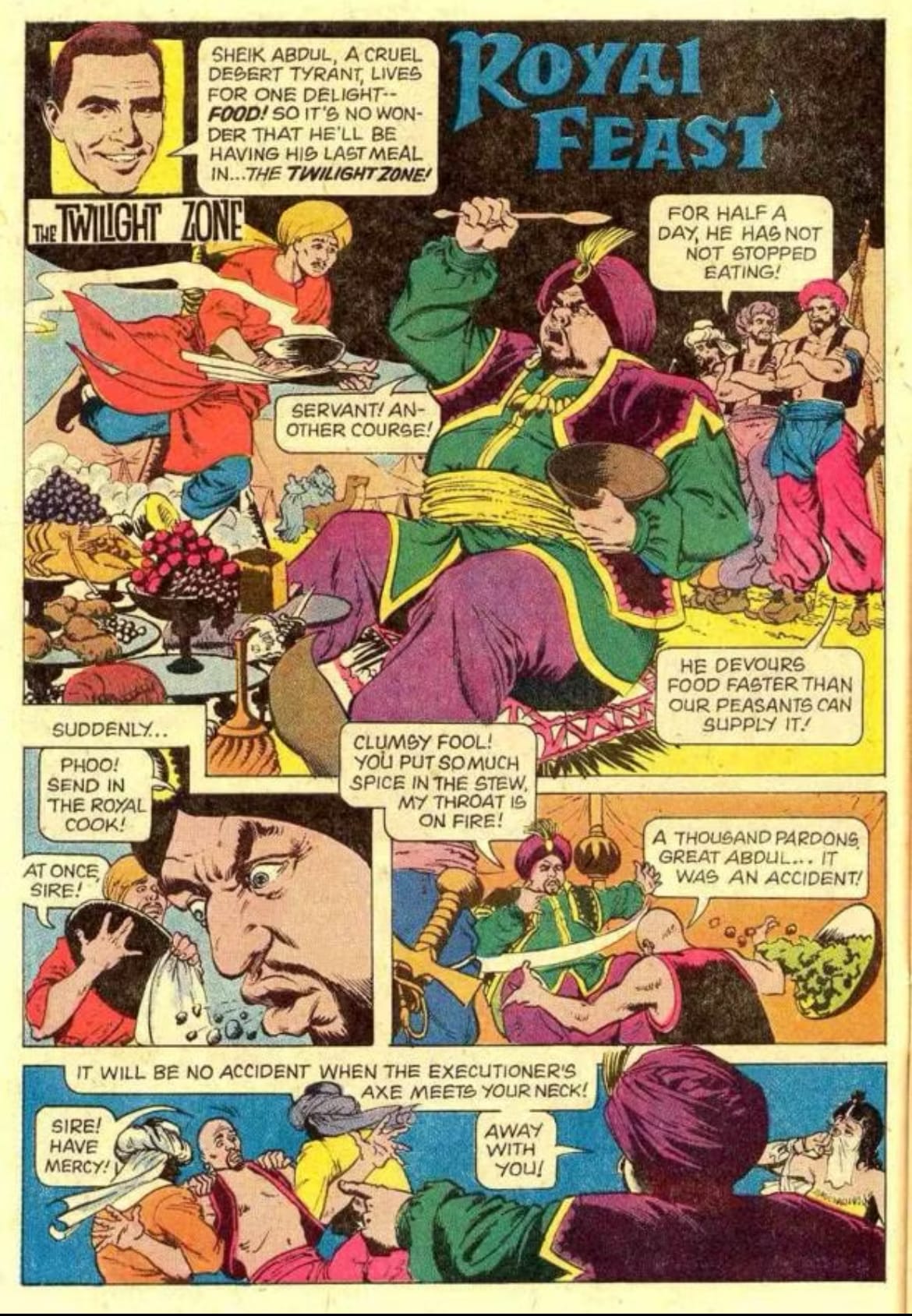
That story — which, as you can see, has not aged particularly well — happens to be the very first professional credit for artist Frank Miller, who would go on to be one of the defining comics storytellers of the Eighties and Nineties, on titles like Daredevil, The Dark Knight Returns, and Sin City.
And that's just a one-sentence footnote in a book whose current draft is just north of 110,000 words.
That's it for today! What did everybody else think?


